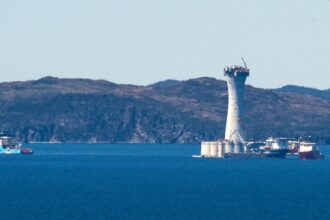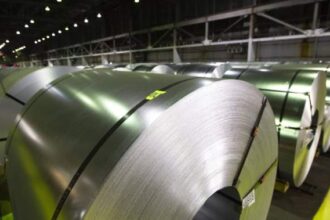The sprawling construction site in Kitimat, British Columbia represents more than just Canada’s first major liquefied natural gas export terminal—it symbolizes the nation’s ambitious entry into a competitive global market. As workers navigate the massive facility taking shape against the backdrop of coastal mountains, LNG Canada CEO Jason Klein surveys what will soon become a transformative force in Canada’s energy landscape.
“By the end of this decade, Canada will be the world’s fifth-largest LNG exporter,” Klein declares with unmistakable confidence during our exclusive interview at the $40-billion development. “What we’re building here isn’t just infrastructure—it’s Canada’s foothold in a rapidly evolving global energy market.”
The numbers behind Klein’s bold prediction are substantial. When Phase 1 reaches completion in 2025, the facility will process approximately 14 million tonnes of LNG annually. Should Phase 2 receive final approval, that capacity would double to 28 million tonnes, positioning Canada among global LNG powerhouses like Qatar, Australia, and the United States.
This growth trajectory comes at a critical moment as global demand for natural gas continues to surge, particularly across Asian markets where countries are transitioning away from coal-powered electricity generation. Industry analysts project worldwide LNG demand could increase by 50% by 2030, creating what Klein describes as “a generational opportunity” for Canadian producers.
“The Canadian advantage is substantial,” explains Klein, pointing to the shorter shipping routes to Asian markets compared to Gulf Coast competitors. “We’re looking at 10-day shorter shipping times to Tokyo compared to U.S. Gulf terminals. That translates to lower transportation costs and reduced emissions.”
Environmental considerations remain central to the project’s development. LNG Canada claims its facility will produce approximately 50% fewer greenhouse gas emissions than the average global LNG facility, achieved through BC Hydro’s hydroelectric power supply and advanced processing technology.
“We’re building what will be among the lowest carbon-intensity large LNG export facilities in the world,” Klein emphasizes. “This isn’t just about economic development—it’s about responsible resource development.”
Indigenous partnerships have formed the foundation of the project’s community approach. With 25 First Nations along the Coastal GasLink pipeline route having signed agreements, the project represents a new model for resource development. Crystal Smith, Chief Councillor of the Haisla Nation, describes the project as “transformative” for her community’s economic sovereignty.
Market dynamics appear favorable despite increased global competition. While U.S. LNG exports have expanded dramatically and Qatar plans significant production increases, industry experts believe Canadian LNG will find ready buyers, particularly in energy-hungry Asian economies seeking stable supply chains.
“The window for Canadian LNG isn’t closing—it’s widening,” says Klein. “Global natural gas demand is projected to increase for decades, even in the most aggressive energy transition scenarios.”
Critics question whether new fossil fuel infrastructure aligns with climate commitments, but Klein counters that natural gas remains essential for global energy security during the transition to renewables. “Natural gas provides the reliable baseload power necessary to support intermittent renewable sources,” he argues.
As the project progresses toward its 2025 completion date, Klein emphasizes that LNG Canada represents just the beginning of the country’s potential in global LNG markets. With additional projects under consideration along both coasts, Canada stands at the threshold of becoming a major player in the international energy trade.
“What we’re witnessing is nothing less than Canada’s emergence as an energy superpower in liquefied natural gas,” Klein concludes. “The question isn’t whether Canada will become a significant global LNG exporter—it’s how quickly we can scale to meet the opportunity before us.”
For more energy sector developments, visit CO24 Business or follow our ongoing coverage of major industrial projects at CO24 Breaking News.
























